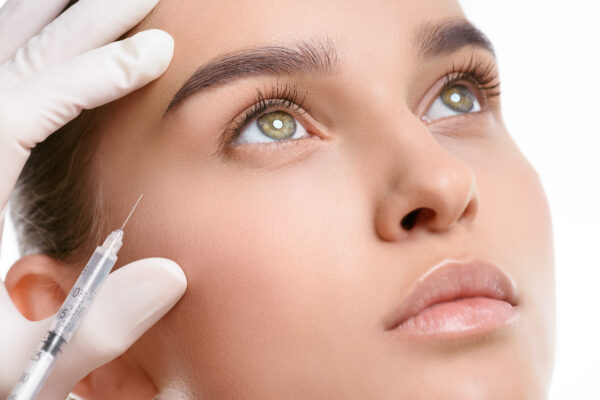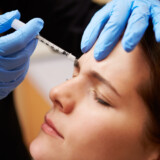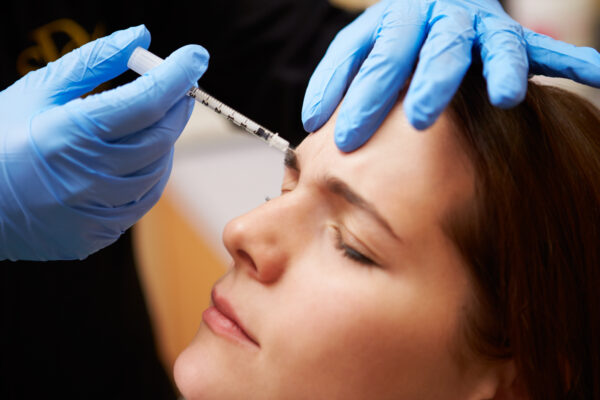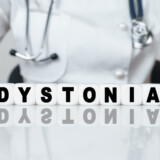Botox And Filler Banned For Minors In UK, And Some Want Ireland To Be Next


Starting in October 2021, administering Botox or injectable dermal filler to anyone under age 18 for cosmetic purposes is a crime in the United Kingdom, even if an adult gives permission. Some in Ireland believe that nation should be next in banning the procedure to put an end to an out-of-control situation that sometimes results in teens having injectable treatments at home from people with no training.
In the United States, there is no minimum age for Botox and filler injections in many states, but some medical professionals set their own rules.
In Ireland, regulation of Botox is lax, sometimes leading to unskilled, untrained injectors doing procedures at beauty salons or private homes. Many teens have been subjected to injections that may not have been done safely or correctly. Some are calling for regulations to be tightened to improve safety and level the playing field for injectors.
One cosmetic injector said recently in Irish media that the industry is simply out of control. She is among industry leaders in the nation who believe something must be done before there are serious injuries or even deaths that result from untrained injectors not following established procedures and safety protocols.
She admits that Botox for medical reasons can be safely used on those under age 18 and can be very effective for migraines or the jaw condition TMD. It can also be used to prevent excessive sweating when injected into hands or underarms and can sometimes treat other medical conditions, including bladder problems.
Those who choose to follow high standards in their practices and exclude teens from treatments are fed up with laxity. There is no governing body willing to tackle the situation, the cosmetic injector said, so harm continues to be done by people with no training.
For Ireland, it’s the Health Products Regulatory Authority that regulates medicines, including Botox, and it has recorded at least five reports of Botox adverse reactions in the first two-thirds of 2021. Most of these, however, were mild or moderate and included blurred vision, rashes and swelling – all reactions that line up with listed possible side effects of injectables.
Training Is Key
No matter what nation an injector chooses to operate a practice in, training is key to avoiding unanticipated effects and adverse outcomes. Good training includes specifics about injection depths, dosages and angles as well as details on what needles to use, how to manage consent forms and more.
Most U.S. states have restrictions on who can administer injectables, and many require training and certification before a medical professional can work on patients.
Dentox’s injectables training programs include these and other key pieces of information, including how to market new skills for maximum benefit to the practice. All Dentox courses are taught by Dr. Howard Katz, a longtime instructor who has been teaching since the beginning of the industry and who is named on the patent application for Botox and related products because of his research.
To learn more about training with Dentox, look at the training options available or reach out. Live and recorded online courses are offered plus live in-person training is available around the nation.
Botox For Levodopa-Induced Dyskinesias: Careful Injections May Get Results


An astounding 45 to 85 percent of people with Parkinson’s disease experience dyskinesias – erratic, involuntary and writhing motions of the face, trunk, legs or arms – that aren’t caused by PD but by the medications that treat other symptoms. Botox for dyskinesias is not well-studied, but it can help with some of the symptoms that people with this condition have.
Dyskinesias happen as a side effect of levodopa, and symptoms can often be reduced if medication dosage is reduced. In addition, other medications can be added to partially control the symptoms, but the condition is stubborn and often goes without successful treatment.
More on Botox For Dyskinesias With PD
Research into Botox for dyskinesias has been insufficient, according to experts, to prove that injections can have the desired effect of reducing or eliminating symptoms. Still, Botox has been used successfully in patients with conditions like pain-producing foot dystonia, blepharospasm and JC-OMD, so it makes sense that Botox could help with dyskinesias as well. The key is limiting dosage to prevent muscle weakness and getting the injections into the precise location to do the most good.
Another PD symptom, freezing of gait, is often unresponsive to dopaminergic therapy, but Botox injections have been shown to have some impact on it. Benefit was inconsistent, however. This related muscle disorder is often seen in conjunction with levodopa-induced dyskinesias.
Offer New Solutions… And Hope
Patients with PD experience a range of symptoms, and their lives are better when some symptoms can be controlled. Skillfully injected Botox can help. Train with Dentox to learn medical uses as well as cosmetic uses of injectables – and learn to offer solutions to patients who can’t find them elsewhere. Reach out or sign up now for an in person, online or on demand Dentox class – and help patients while you help your practice grow in revenue in reputation.
Botox For Blepharospasm: A Remarkable FDA Approved Solution Since 1989


Botulinum toxin has proven to be a remarkable treatment for a range of movement disorders, including blepharospasm – the uncontrolled blinking, narrowing or closing of one or both eyelids that is considered a type of dystonia. Onabotulinum toxin A, also called by the brand name Botox, was approved by the U.S. Food and Drug Administration in 1989 for treating this condition which, until that time, had no effective clinical or surgical treatment.
Initial studies showed that doses of 25 to 50 U were effective for blepharospasm with few side effects. Adverse effects that could happen include blurred vision, ptosis (eyelid drooping), cornea problems and eye dryness. While there is no good randomized and controlled efficacy data to support use of Botox for blepharospasm, studies have shown it to be safe and effective. As many as 90 percent of patients in some studies have seen benefit.
More About Botox For Blepharospasm
Allergan, the makers of Botox, promote Botox for blepharospasm through online content. On a website devoted to the topic, the company points to three studies that show effectiveness, including the one in which 25 of 27 patients – or 90 percent – improved in just 2 days.
Doctors noted in another study that they could more easily hold open the eyelids of patients treated with Botox than before treatment.
Botox treatments block the signals to nerves that cause blepharospasm and usually have to be repeated every 3 months for continued effectiveness. They can be used on patients as young as 12 years old.
Train To Improve Patient Lives With Botox
Dentox trains medical and dental professionals in therapeutic and cosmetic uses of Botox and related products. To learn from Botox training originator Dr. Howard Katz how to inject Botox and improve patient lives, sign up or reach out now. It’s a good career decision and a great way to keep up with your competitors.
Botox For Migraine Offers Lower Cost And Higher Persistence Than Newer CGRP mAbs


A study presented at this year’s American Academy of Neurology Virtual Annual Meeting offered important new data about how much it costs to be treated for migraines with onabotulinumtoxinA – usually called by its widely recognized brand name, Botox – and how likely patients are to return for future treatments.
While it has long been known that Botox provides a significant reduction in the duration, severity and frequency of migraine headaches for many patients, the new research took a look at a year of real-world data and found that patients who got Botox injections for migraines were more likely to return for additional treatment and that patients paid less for migraine treatment overall than they did when turning to newer CGRP mAbs treatments.
Calcitonin gene-related peptide monoclonal antibodies (CGRP mAbs) are a relatively new treatment for migraines that have been considered revolutionary because they are the first preventative medicine for migraines developed specifically for the purpose. All other preventatives were developed for other purposes and later found to be useful for migraines.
The CGRP mAbs treatments involved in the study include Eli Lilly’s Emgality (or galcanezumab), Amgen’s Aimovig (or erenumab) and Teva’s Ajovy (or fremanezumab).
What The Study Found About Botox For Migraine
The analysis of past insurance claims by AbbVie, the parent company of the maker of Botox, looked at nearly 2,700 adult claims on commercial insurance or Medicare for chronic migraine that involved treatment with either Botox or CGRP mAbs. Nearly 41 percent of patients treated with Botox persisted with the treatment while less than 28 percent treated with CGRP mAbs persisted.
The finding was surprising because CGRP mAbs treatments are often considered more convenient and comfortable than Botox since only a single injection is necessary per treatment – an injection that can be done at home.
AbbVie also looked at cost differences between Botox treatments for migraines and CGRP mAbs. After necessary adjustments, the analysis found that treatment costs were similar. Botox treatment, however, resulted in much lower costs for acute migraine medicines – a difference of $639 vs. $883 for the year. Botox treatments also resulted in lower costs of oral preventatives for the patients, at $313 vs. $413. Additional research could later determine specific reasons for the differences, which might include factors involving insurance coverage, tolerability or efficacy.
Hundreds Of Millions In Revenue With Botox For Migraines
Both Botox and CGRP mAbs are intended to be provided as a third-line therapy option for patients with chronic migraines who didn’t get good results from two of the daily preventatives usually prescribed. These include beta-adrenergic receptor blockers, antidepressants, calcium antagonists and anti-epileptics.
AbbVie’s study found that those with migraines are more likely to stick with Botox treatments and spend less per year on preventatives and acute treatment medicines than those who choose CGRP mAbs, which may be more convenient.
Further, Botox has proven through years of use to be well-tolerated by patients and to reduce migraine symptoms when given every 3 months. It can also help with shoulder and neck pain, which may accompany migraines. It is used to treat patients who have at least 15 migraine headaches per month but do not respond to first-line and second-line treatments.
Research has shown that CGRP mAbs treatments given once a month or once every 3 months as recommended by the maker can reduce average monthly migraine days for patients. Still, Botox for migraines is expected to generate more than $268 million in revenue by 2030 in the 7 nations where it is prescribed most.
Get Your Share Of The Revenue
If you’re a medical or dental professional considering adding Botox for therapeutic and cosmetic purposes to your practice, train with Dentox to learn from the best. Dentox training is offered in person, online and on demand and is led by Dr. Howard Katz, the original of Botox training. Reach out now to learn more or sign up for expert training from the company that started it all. You deserve your share of Botox revenue – and your migraine patients deserve proven Botox for migraine.
Botox For Oromandibular Dystonia: Hope For This Rare Condition


Oromandibular dystonia (OMD) involves involuntary and repetitive jaw movements and is often accompanied by bruxism – clenching or grinding of the teeth. While oromandibular dystonia is rare, its symptoms can interfere with chewing, speaking and even swallowing.
The condition is divided into jaw-opening (JO) movements and jaw-closing (JC) movements and is often seen in patients in connection with cervical dystonia or blepharospasm, involuntary eyelid movements. When unwanted contractions of the jaw and tongue occur along with spasms of muscles around the eye, the condition is called Meige’s syndrome.
More About Botox For Oromandibular Dystonia
Some forms of OMD are especially hard to treat, but Botox has helped many patients. For example, research has shown that in patients with Wilson’s disease accompanied by JO-OMD, Onabot-A – or Botox – provided mild to moderate improvement in movements with 60 percent of patients having only mild difficulty swallowing after treatment.
In another study of 162 patients who received Botox injections of 10 to 200 U into the masseters, the submental muscle complex or both, about 68 percent – 110 patients – saw functional improvement in speaking and chewing. The most common side effects were difficulty speaking and swallowing. There were significant differences, however, in side effects and outcomes depending on whether a patient had JC-OMD or JO-OMD.
There is also a connection between dystonia and bruxism, and other studies have shown that Botox is safe and effective for bruxism. When injections are done into the masseter muscles, pain and range of motion of the jaw improved in clinical research.
Clear The Confusion
For medical and dental professionals without specific training in OMD, proper dosages and injection sites would be almost impossible to work out. When you train with Dentox, you’ll learn medical and cosmetic uses for Botox from the originator of injectables instruction, Dr. Howard Katz. Reach out now or sign up for Botox and dermal filler training from the best in the business.
Former Big Brother Star Chanelle Hayes Among Celebs Training To Inject Botox


Chanelle Hayes is already a model, singer, television personality and businesswoman, and now the former Big Brother star has added aesthetic training to her list of ventures. She’s learned Botox and dermal filler injections as well as other aesthetic procedures as part of nursing training.
The celeb has battled food addiction in the past and eventually lost over 100 pounds, leading to a desire to train as a nurse.
And she’s not the only celebrity who has publicly announced that she has gone for injectables training. Media personality and model Katie Price, who has long been a fan of cosmetic procedures and had a breast augmentation procedure at age 18, has recently trained to become a cosmetic practitioner so that she can offer injectable treatments to paying customers who want to get the jabs from the celebrity.
Months Of Training
Hayes paid thousands for her course in the UK and indicated in 2021 that she has been training in injectables for at least six months. Her course may have also included instruction in microdermabrasion and other aesthetic treatments that patients would find at a spa or medical office. (In the United States, Dentox is among companies that can train Botox and dermal filler injectors in just one day.)
Hayes was a student at NEW College in West Yorkshire before she appeared on Big Brother in 2007. She shared on Instagram in 2021 that she was attending a Botox and dermal filler training program near her and was “learning aesthetics alongside my nursing degree.”
She later posted that she was practicing at her training academy on live models. By 2024, she hopes to complete her nursing training and become a fully qualified medical professional, leaving her fame behind her if possible. At the moment, in addition to her studies she makes occasional media appearances and also runs a cake-making business that she opened in 2011.
It Might Not Happen Here
In the United States, Hayes might or might not be allowed to work as a Botox injector, depending on the state. American laws regarding who can inject Botox and dermal fillers vary from state to state, forming a confusing hodgepodge of regulations that can leave even well-trained injectors unable to use their skills because of their location.
Some states allow nurses and nurse practitioners to administer injectables, although some require that they work under the supervision of a doctor. Other states prohibit Botox and dermal filler injections by nurses, nurse practitioners, physician assistants and even dentists, in some cases.
No matter the state or country, injectors need to be well-trained to do good work for their clients. Even those who learned the basics of injectables while getting their professional degrees may not have up-to-date training that is precise enough to treat patients. That’s why Botox and dermal filler training like that provided by Dentox is so important.
Dentox offers one-day in-person injectables training with practice on live models plus live online and recorded on-demand courses, all led by company founder Dr. Howard Katz, America’s most experienced Botox and filler instructor. To learn more about Dentox courses or to schedule your training, reach out now. Options are available to meet almost every need.
Botox For Camptocormia: A Worthwhile Option For A Difficult To Treat Condition


Camptocormia is a Parkinson’s disease (PD) symptom that impacts the back muscles and is a type of axial dystonia. It is characterized by a 45-degree forward flexion or bend in the patient when standing. When the patient sits, reclines, walks with a walker or stands against a wall, the symptom go away in most cases.
Tightening of the paraspinal muscles is the reason, and dopaminergic drugs used for PD treatment can cause it or make it worse. Botox for camptocormia isn’t always effective, but this is a stubborn condition with few viable treatment choices, so it should be considered.
More About Botox For Camptocormia With PD
Experts say that Botox injections into the paraspinal muscles can probably reduce or alleviate the forward bend or stoop associated with camptocormia. Research on this topic isn’t very thorough, however. There are very few studies on Botox for this condition, and relatively few patients were involved in that research.
Injections are usually placed into the rectus abdominis, iliopsoas and other muscles and must be done with precision. Some experts suggest ultrasound-guided injections into the iliopsoas muscle, but placing the shots into the rectus abdominis and the external abdominal oblique are most likely to provide desirable results. The treatments sometimes fail not because the wrong muscles are selected but because the injections are placed incorrectly and don’t go into the right muscles.
Provide Another Option
Camptocormia is difficult to treat and often doesn’t respond to any treatment path. When you’re well-trained in Botox for medical purposes, however, you can give patients who have exhausted other options an additional chance at improved posture. Get your training from Dentox and Dr. Howard Katz, the first Botox trainers. Classes are available in person, on demand and online. Reach out or sign up to learn skills that can improve patient lives and help your practice soar above the competition.
Botox For Essential Tremor: Minimal Side Effects When Done Precisely


While essential tremor (ET) is a neurological condition that can cause a patient’s hands, head, voice, trunk or legs to shake in a rhythmic manner, when people speak of ET they often mean only shaky hands. The condition is confused with Parkinson’s disease, but it isn’t necessarily accompanied by any other symptoms.
ET is perhaps the most common of all movement disorders and a good candidate for treatment with Onabot-A, which is often called by its brand name, Botox. Treatment with Botox for essential tremor can provide excellent symptom relief, and weakness can be avoided with careful choice of which muscles to treat.
More About Botox For Essential Tremor
Several studies have been conducted regarding the use of Botox for ET. A study of 34 patients in 1991 was the first to report effectiveness. In that project, 67 percent of patients saw improvement in hand tremors, but 60 percent experienced weakness in arm flexors and extensors caused by the injections. When the researchers eliminated injection into the extensor muscles, weakness was reduced but tremor was still controlled just as well. Other research confirmed the positive results.
Studies have repeatedly shown that results are good, but hand weakness is possible when dosage or muscle selection isn’t perfect. Some patients have even withdrawn from research studies because of an unacceptable level of hand weakness. But the most recent research has shown that the problem can be minimized when the injector carefully chooses on an individual basis which muscles to treat.
Reduce Tremors And Improve Lives
Reducing tremors can eliminate the social stigma of ET and improve function, but there is a significant risk of hand weakness. To learn to inject Botox properly for minimal side effects, reach out to Dentox for in person, online and on demand training in medical and aesthetic uses of injectables. When you know the best techniques, you can make the most difference in patient lives and in your practice’s bottom line.
TMJ Pain: Botox For TMJ Could Be The Best Thing Ever For Pain Relief


Stress is a very real part of most of our lives. That stress can lead to stiffness in the jaws, shoulders and upper back that could be related to the jaw condition TMJ disorder. Other muscular issues can be part of the equation too – including teeth clenching and grinding. If you wake up with a sore jaw or other head pain, it could be TMJ disorder.
Pain can range from mild to unbearable. Patients often try a range of unsuccessful treatments that may include medication, jawline massage, gua sha, microcurrent facials, herbal teas, relaxation exercises and much more. For some, the situation can become desperate.
But can Botox help? Keep reading for some quick FAQs:
What is TMJ?
TMJ disorder – also called TMD – is a condition that impacts the temporomandibular joint, or where the jaw connects to the skull. Symptoms of TMJ disorder include pain during the day or night, problems chewing, popping or clicking of the jaw and, in extreme cases, locking of the jaw.
How does Botox for TMJ work?
Botox relaxes the masseter or jaw muscle in people with TMJ disorder, decreasing the stress that the jaw joint experiences and providing relief to many patients. Relief can begin in days and last for several months.
How do you know if Botox for TMJ is the right choice?
Anyone who experiences TMJ symptoms may be a candidate for Botox injections, according to experts. Treatments take only minutes to administer, have a relatively moderate cost and usually don’t cause any downside if they’re ineffective.
How much does Botox for TMJ cost?
The price of neuromodulator injections for TMD pain varies widely by provider. Treatments cost more in some large cities than in smaller cities, and some high-end clinics or dental offices charge more than others. A ballpark figure is $1,500 for a treatment of 25 units per side.
How often is TMD Botox necessary?
Whether used for cosmetic or medical purposes, Botox injections usually last from 3 months to perhaps as long as a year or two. After repeated treatments, muscles may weaken and require less frequent or lower-dose treatments in the future.
Where can I get Botox for TMJ pain?
The most important thing to remember is to choose a qualified injector. The key is that the injector must have good training from a respected Botox certification program. The provider might be a general practice doctor, a dentist or even a nurse practitioner or physician assistant, if allowed. States each have their own rules about who can administer Botox, and not all providers offer Botox for jaw pain relief.
What else should I know about Botox for jaw pain?
There are a few other things to keep in mind regarding jaw pain Botox injections. First, treatment on both sides is necessary even if pain is only on one side to maintain muscle balance and prevent problems with teeth alignment and chewing. Also, most providers recommend avoiding facials and other forms of facial massage for at least a day after treatment to prevent the Botox from spreading to areas where it isn’t needed.
Some TMD sufferers report that Botox is the only treatment that has ever worked for them, providing months of relief from debilitating pain. It’s important to remember that injections work best and have the lowest potential for side effects when administered properly.
Dentox trains medical and dental professionals in both cosmetic and medical uses of Botox and related products. Look for a Dentox certified injector for peace of mind.
If you want to get Botox training and are allowed to provide injectable treatments in your state, sign up for an in person or online course with Dentox and Dr. Howard Katz – for training that can enhance your career and help you improve patient lives.
Botox For Cervical Dystonia: FDA Approved And Recommended As A First-Line Treatment


Clinical research has shown that botulinum toxins can help with cervical dystonia – involuntary movements of the neck. The evidence is solid enough that the American Academy of Neurology recommends Botox injections as a first-line treatment for this condition that often impacts musicians, golfers and others who perform repetitive motions.
The condition is a type of focal dystonia – or involuntary spasm. Cervical dystonia can be further broken into specific conditions that include torticollis (turning or rotating of the head to one side), anterocollis (bending of the head and neck), laterocollis (tilting of the head to one side) and retrocollis (head and neck extension). Doctors often observe combinations of these movements happening at the same time.
More On Botox For Cervical Dystonia
In one study, those who received Botox for cervical dystonia had a significantly greater decrease in scores on a 54-point Cervical Dystonia Severity Scale than those who were checked after receiving placebo injections. The scale indicates the severity of the patient’s head positioning problems.
Results from Botox for cervical dystonia have been good enough that the American Academy of Neurology recommends it as the first treatment for the condition. For some other conditions – like migraines – Botox is recommended only after other treatments have failed. Cervical dystonia Botox treatments reach peak effectiveness at about 6 weeks after treatment, and the benefit usually lasts about 3 months before re-treatment is necessary.
Learn To Treat Medical Conditions With Botox
Dentox offers Botox and dermal filler training programs that teach both medical and cosmetic uses of Botox and related products. Medical and dental professionals who train with Dentox learn hands-on in person, online or on demand from Dr. Howard Katz, the originator of injectables training. To train with Dentox, reach out or sign up now. It’s good for your career – and great for your patients.





